Apple's iPhone 16e Pricing Strategy: A Balancing Act of Challenges and Opportunities
Apple's iPhone 16e Pricing Strategy: A Balancing Act of Challenges and OpportunitiesA recent report from market research firm CIRP suggests that Apple's pricing strategy for its newly launched iPhone 16e may not effectively entice existing iPhone SE users to upgrade. The report delves into the purchasing behaviors of iPhone SE users, revealing the challenges and opportunities Apple faces with this new strategy
Apple's iPhone 16e Pricing Strategy: A Balancing Act of Challenges and Opportunities
A recent report from market research firm CIRP suggests that Apple's pricing strategy for its newly launched iPhone 16e may not effectively entice existing iPhone SE users to upgrade. The report delves into the purchasing behaviors of iPhone SE users, revealing the challenges and opportunities Apple faces with this new strategy.
CIRP's findings show that the iPhone SE's success largely hinges on its low price point and appeal to a specific demographic. This user base comprises three main groups: Android users, first-time smartphone buyers, and existing iPhone SE owners. Data reveals that 19% of iPhone SE buyers previously used Android phones significantly higher than the Android conversion rate for other iPhone models (14%). Furthermore, 9% were first-time smartphone buyers, surpassing the rate for other iPhones (2%). A notable 26% were already iPhone SE users, highlighting the model's stickiness. However, a significant 45% of iPhone SE buyers previously owned iPhone models from the numbered series (e.g., iPhone 11, 12), indicating a segment of users "downgrading" from higher-end models.
This data highlights a key characteristic of the iPhone SE user base: price sensitivity. These users, even those who previously owned premium iPhones, ultimately chose the more affordable iPhone SE due to cost. The iPhone 16e's starting price of $599 is considerably higher than the iPhone SE's $429, significantly increasing the barrier to entry for existing iPhone SE users.
The report suggests that the iPhone 16e's higher price could push current iPhone SE users towards cheaper alternatives, such as Android phones or refurbished iPhones. The $170 price difference is substantial for budget-conscious iPhone SE owners. While carrier subsidies might mitigate the cost, the report notes that iPhone SE users prefer low-cost carriers without subsidies, limiting the effectiveness of such promotions.

Apple's positioning of the iPhone 16e as its cheapest model creates an inherent contradiction. For iPhone SE users, upgrading to the iPhone 16e means a higher cost, making cheaper alternatives more appealing. Persuading iPhone SE users to choose the former requires overcoming this price hurdle and acknowledging their price sensitivity.
CIRP views Apple's abandonment of the low-cost smartphone market as a risky move, with the long-term impact yet to be seen. Whether iPhone SE users will opt for the iPhone 16e remains unknown. The report emphasizes the significant challenge Apple faces in attracting iPhone SE users to upgrade while simultaneously appealing to potential buyers from other iPhone series to expand the iPhone 16e's market share.
Apple's prediction of iPhone SE upgrade intent may be flawed, based on the data analysis. The purchasing behavior of iPhone SE users reveals distinct preferences; they don't simply seek performance or feature upgrades; price is a decisive factor. Apple needs to reassess its pricing strategy and gain a deeper understanding of its target audience's needs and expectations. Relying solely on improved performance and features to attract price-sensitive users may be insufficient.
The 45% figure of iPhone SE users previously owning numbered series iPhones is particularly noteworthy. This segment didn't choose the iPhone SE due to satisfaction but rather due to price. This suggests that Apple's high-end models may need improvements beyond pricing to entice these users back.

The success of the iPhone 16e's pricing strategy impacts not only Apple's low-end market share but also its overall market strategy. Whether higher pricing yields higher profits and compensates for losses in the low-cost market is crucial for Apple to consider. Finding the optimal balance between profitability and market share is vital for maintaining a competitive edge.
Apple's success with the iPhone SE stemmed from accurately identifying the needs of a specific demographic. However, the iPhone 16e's pricing strategy might disrupt this balance. CIRP's report provides valuable insights, guiding Apple towards a deeper market understanding and informing future product strategies. Apple needs to address how to compensate for the market gap created by the iPhone 16e's high price and balance its high-end and low-end market strategies, impacting its future competitiveness.
In conclusion, the iPhone 16e's pricing strategy is a high-risk, high-reward endeavor. Its success or failure will directly influence Apple's future in the smartphone market. Apple must constantly monitor market dynamics and adapt its strategy accordingly to maintain its leading position. Future market performance will be the ultimate test of this strategy. Currently, Apple faces significant challenges and needs further efforts to ensure the iPhone 16e's success and solidify its global leadership in the smartphone market.
Tag: Apple iPhone 16e Pricing Strategy Balancing Act of Challenges
Disclaimer: The content of this article is sourced from the internet. The copyright of the text, images, and other materials belongs to the original author. The platform reprints the materials for the purpose of conveying more information. The content of the article is for reference and learning only, and should not be used for commercial purposes. If it infringes on your legitimate rights and interests, please contact us promptly and we will handle it as soon as possible! We respect copyright and are committed to protecting it. Thank you for sharing.


